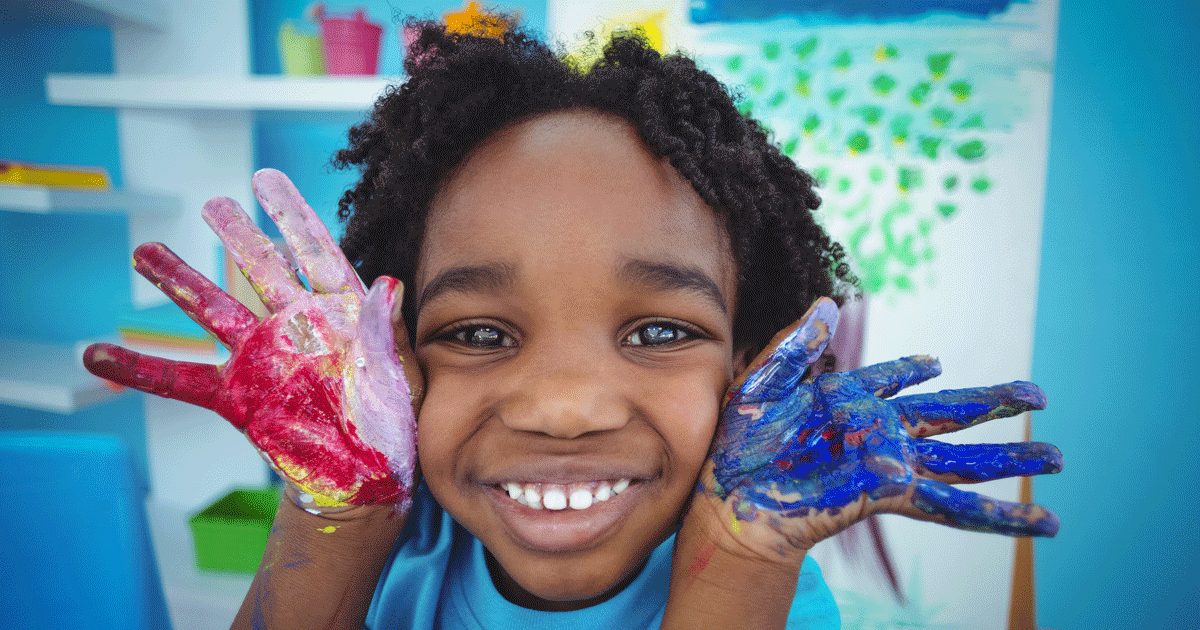One of the skills![]() that the Becoming Brilliant authors Roberta Michnick and Kathy Hirsh-Pasek focus on as critical to future success is that of confidence. You may think of confidence as something innate—you’re born smart, or good-looking, or good at sports, and you develop confidence as a result. You might conflate it with conversations about whether kids have low or high “self-esteem.” And these aren’t necessarily irrelevant, but the argument of the authors is that confidence is a skill we can intentionally build—it’s not simply a side effect of other, inborn blessings—and second, it’s important in the future because we will all need to be more nimble, adaptive learners in a knowledge economy, and learning happens best within a sense of confidence. The authors define confidence as having two components: the willingness to try, and the willingness to persist through difficulty. Golinkoff and Hirsch-Pasek assert, “Without confidence, people cannot accept new challenges and stretch beyond their comfort zones.”
that the Becoming Brilliant authors Roberta Michnick and Kathy Hirsh-Pasek focus on as critical to future success is that of confidence. You may think of confidence as something innate—you’re born smart, or good-looking, or good at sports, and you develop confidence as a result. You might conflate it with conversations about whether kids have low or high “self-esteem.” And these aren’t necessarily irrelevant, but the argument of the authors is that confidence is a skill we can intentionally build—it’s not simply a side effect of other, inborn blessings—and second, it’s important in the future because we will all need to be more nimble, adaptive learners in a knowledge economy, and learning happens best within a sense of confidence. The authors define confidence as having two components: the willingness to try, and the willingness to persist through difficulty. Golinkoff and Hirsch-Pasek assert, “Without confidence, people cannot accept new challenges and stretch beyond their comfort zones.”
This has been on my mind for a few reasons recently. The first is that I have a 4-year-old, who I know firsthand learns best when she feels comfortable and confident. If she is asked to do things that are beyond her development, or in a situation where she is comparing herself to adults, she quickly shuts down. “I can’t do it,” she might say, which is heartbreaking (and sometimes frustrating) to a parent. More than an accurate description of her skill level, these words signal to me that she is feeling uncomfortable and out of her depth and that whatever I’m asking for needs to be reframed. (If only I could always remember that in the moment!)
The second reason is that, when I think about students who have been ill-served by schools over the course of many years, being told over and over that they are behind, or below average, or simply not good at math (for example), I wonder how they can ever be expected to develop other skills—how can they learn anything—if they have been lead to feel that in an academic environment, they do not deserve to feel confident. (The reasonableness of this concern is supported by other research showing that one of the barriers first-generation college students feel is doubt that they belong in an academic institution. This self-doubt makes them more likely to drop out the first time that they fail a quiz or don’t understand a problem set. The single failure confirms in their minds that college is beyond them. On the other hand, more affluent kids see a single failure as a small trip-up on their otherwise smooth path to success.)
Research cited by Golinkoff and Hirsch-Pasek in Becoming Brilliant shows that, “When people are concerned where they stand, they are likely to avoid tasks and situations they believe exceed their capabilities.” And in order to develop confidence, kids need to be in environments of “controlled risk,” where they can stretch with safety. They have to be able to make mistakes and learn from their missteps.
The authors specifically cite arts education as one valuable tool for developing the habits that breed confidence. Arts education creates opportunities for students to engage, persist, express, stretch/explore, and reflect. All of these experiences lead to the development of higher executive functioning, and of confidence.
In my last two posts (part one and part two), I shared some excerpts from the teaching philosophy, and memories of his class, of my eighth-grade art teacher, John Post. Below are a few examples I pulled from throughout his philosophy that relate to how to teach to build confidence in kids.
First, here is Mr. Post talking about the importance of not shielding kids from their mistakes, as an opportunity to let them grow and learn.
My first year as a teacher, I would touch up kidsʼ glazed projects as I was loading the kiln. Then I realized that if I did that, the kids would never learn to glaze correctly themselves. I was short circuiting the feedback that artists get when they make mistakes. So now, the way they glaze it, is the same way that it gets fired. When it comes out of the kiln and they get it back, they get to see the results of their efforts and make appropriate changes in the future to make the work better… Consequences are the best teacher in this case. Kids learn over time that craftsmanship is important.
Second, Mr. Post talks about the importance of offering repeated opportunities for practice (to be contrasted with, for instance, speeding through a pacing plan) to generate skill and confidence.
The materials I use in my elementary art program are the same types of materials that professional artists work with. We just don’t create one clay project a year or one painting a year. Art skills don’t grow that way. In order to become skilled at anything you have to have repeated exposure to it… By using the same materials over and over again, my students gain skills and confidence. What changes from lesson to lesson is the idea and the content of what we are learning.
Mr. Post talks in a few places about teaching developmentally appropriate skills and offering his students appropriate boundaries and support to make sure they can meet a lesson’s goals—a confidence builder to be sure.
The reason I have goals for each lesson is so that I can teach some skills to the kids or get them to look at some art and gain an understanding of the purpose, choices and decisions an artist made while creating it. I like to think of my lesson goals as scaffolding. The scaffolding gives the kids enough structure for them to learn something new while at the same time allowing to them to build and create understanding for themselves. I donʼt expect an 11-year-old 5th grade student to be able to create a perfectly proportioned clay bust. What I want kids to learn in a lesson like that is that artists have been creating portraits for thousands of years.
Finally, throughout his philosophy, you can find evidence that Mr. Post believes that “kids are people too,” and that we should give them the respect of letting them wrestle through ideas.
I am disappointed when I see student art and it looks like the teacher stripped all the life out of something to just teach one element or principle of design. Good art is complex, when teachers dumb down art to focus on one element or principle they don’t respect that kids can grasp complicated visual ideas if you let them grapple with them.
If we explain everything to kids, without providing the opportunities for them to independently grapple with complexity, how can we expect them to have the confidence that they can think critically, reflectively, on their own?
This will be my last post in this mini-series on “essential art,” though I think there are many more I could write. What I hope you do, as a reader, is think about the richest environments for learning that you ever experienced. Who was a “Mr. Post” for you? Who led you in your deepest learning? And what do you remember most about that learning experience—is it straight content (the quadratic equation or a particular rule of grammar)? Or did you feel yourself growing in a broader skill—gaining confidence, critical thinking, or creativity? Were you engaged, stretching, and wrestling with complex ideas yourself? Or was someone standing at the front of the class, lecturing you?
99% of us will answer “no” to this last question. We need schools that honor the way kids actually learn best, and acknowledge that these broader skills are necessary for future success. We need schools that are designed like Mr. Post’s art classes.







